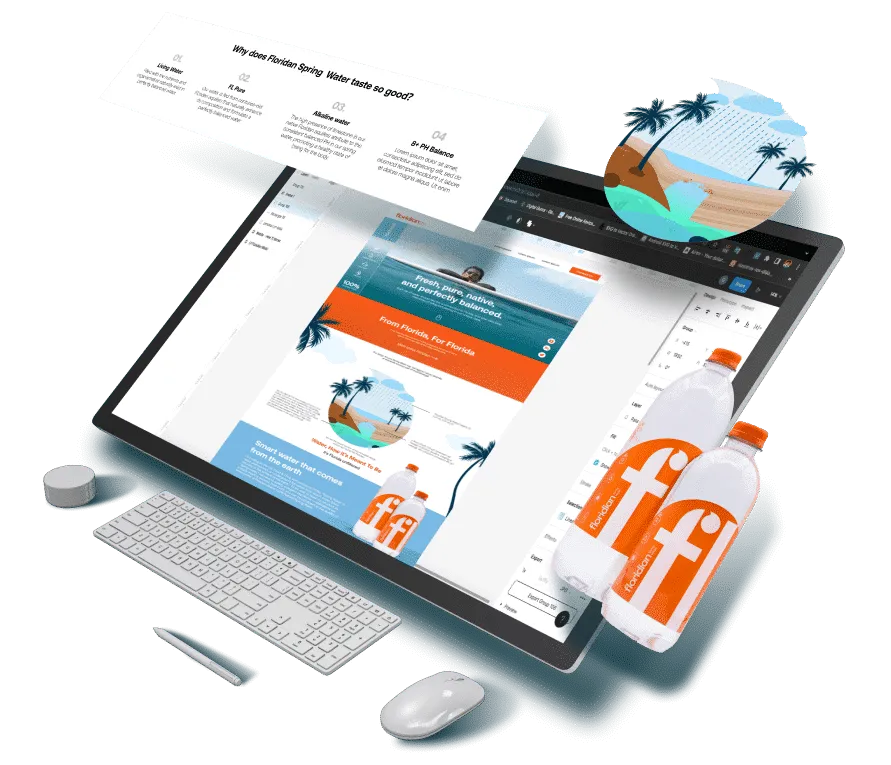
Core Web Vitals in 2026: How to Keep Your Website Fast, Stable, and Profitable
Core Web Vitals 2026 are no longer a “nice-to-have” technical detail; they are a fundamental part of how users experience your site and how search engines evaluate it. A slow, unstable page now affects not only your rankings, but also your conversions, ad revenue, and brand perception. Understanding how Core Web Vitals work—and how to improve them—has become essential for any serious web project. What Core Web Vitals measure today Core Web Vitals are a set of user-centric performance metrics that focus on how fast content loads, how responsive the page feels, and how stable the layout is during interaction. In 2026, the key metrics are Largest Contentful Paint (LCP), Interaction to Next Paint (INP), and Cumulative Layout Shift (CLS). LCP measures how quickly the main content of the page becomes visible to the user. INP evaluates how fast the page responds to user interactions like clicks, taps, or key presses. CLS tracks how much the layout shifts unexpectedly while the user is trying to read or interact with the page. These metrics are based on real user data (field data), not just lab tests, which means that real-world network conditions, devices, and user behavior directly influence your scores. Why Core Web Vitals matter for SEO and business Search engines use Core Web Vitals as part of their page experience signals, impacting how pages rank when multiple results are otherwise similar in relevance. Sites with poor Web Vitals are more likely to frustrate users, leading to higher bounce rates and lower engagement, which indirectly harms organic performance and brand trust. From a business perspective, every extra second of delay or unexpected layout shift can cost money. Slower LCP can reduce conversions on checkout pages, landing pages, and lead forms, while poor INP can make your app feel laggy and unreliable, encouraging users to abandon tasks. Improving Web Vitals is not just an SEO task; it is a revenue and retention strategy. Typical issues that hurt Core Web Vitals Many of the problems that damage Web Vitals are common patterns in modern web development. Heavy images, unoptimized hero sections, and large JavaScript bundles are frequent causes of poor LCP, especially on mobile. INP often suffers when pages load too many scripts, tracking tags, or third-party widgets that block the main thread. CLS problems usually come from elements that appear or resize after initial load—ads without reserved space, fonts that reflow text, or images injected without dimensions. While each issue may seem small on its own, together they create a frustrating experience that users feel immediately, even if they do not know the technical terms behind it. How to improve LCP (Largest Contentful Paint) To improve LCP, the goal is to make sure the main content of the page becomes visible as quickly as possible. That usually means optimizing the critical rendering path and reducing the weight of above-the-fold content. Practical actions include: Optimizing and compressing hero images, using modern formats and responsive sizes. Reducing server response times with caching, CDNs, and efficient backend logic. Eliminating render-blocking resources by inlining critical CSS and deferring non-essential scripts. For many sites, simply revisiting the homepage and key landing pages with these principles in mind can lead to significant improvements in LCP without a full redesign. How to improve INP (Interaction to Next Paint) INP focuses on responsiveness: how quickly the interface reacts when users interact with it. Even if a page looks fully loaded, a slow INP can make it feel broken or untrustworthy. To improve INP, teams should: Minimize heavy JavaScript on initial load and split bundles so that only essential code runs first. Avoid long tasks on the main thread by breaking them into smaller chunks and using web workers when possible. Delay non-critical analytics, chat widgets, and third-party scripts until after the main interaction paths are responsive. Profiling real interactions—like clicking “Add to cart” or opening a menu—helps identify where the UI feels slow, so developers can optimize exactly what users notice most. How to improve CLS (Cumulative Layout Shift) Improving CLS is about stability: ensuring that elements do not jump around unexpectedly while users read or interact with the page. Good layout behavior builds trust and reduces accidental clicks on the wrong element. Key practices include: Reserving explicit space for images, videos, and ads by setting width and height or using aspect-ratio boxes. Avoiding inserting content above existing content unless triggered by a user action. Using font loading strategies that reduce layout changes when custom fonts are applied. A stable, predictable layout is especially important on mobile screens, where small shifts can have a big impact on usability. Core Web Vitals 2026 Measuring and monitoring Improving performance once is not enough; Core Web Vitals need continuous measurement and monitoring. Lab tools help diagnose issues during development, but field data is what truly matters for rankings and user experience. Teams should combine lab testing (for example, Lighthouse-style audits) with real-user monitoring that collects Web Vitals from actual visitors. This data shows how different devices, locations, and connection speeds affect performance, and reveals whether changes are truly improving the experience over time. Integrating these metrics into regular reporting keeps performance visible alongside SEO and conversion KPIs. Balancing performance with design and features A common fear is that performance optimization will limit creativity or force minimalistic designs. In practice, the best-performing sites combine strong visual design with smart technical choices: efficient images, well-structured CSS, and components built with performance in mind from the start. Instead of treating performance as a final “fix,” high-performing teams consider Web Vitals when designing layouts, choosing libraries, and planning new features. This mindset prevents bloat from accumulating and reduces the need for large, disruptive refactors later. Why partnering with experts makes a difference Optimizing Core Web Vitals can be challenging, especially when working with existing sites, multiple integrations, and limited internal resources. It requires a combination of design, development, analytics, and SEO expertise to diagnose issues correctly and prioritize changes that truly move the needle. This is where










